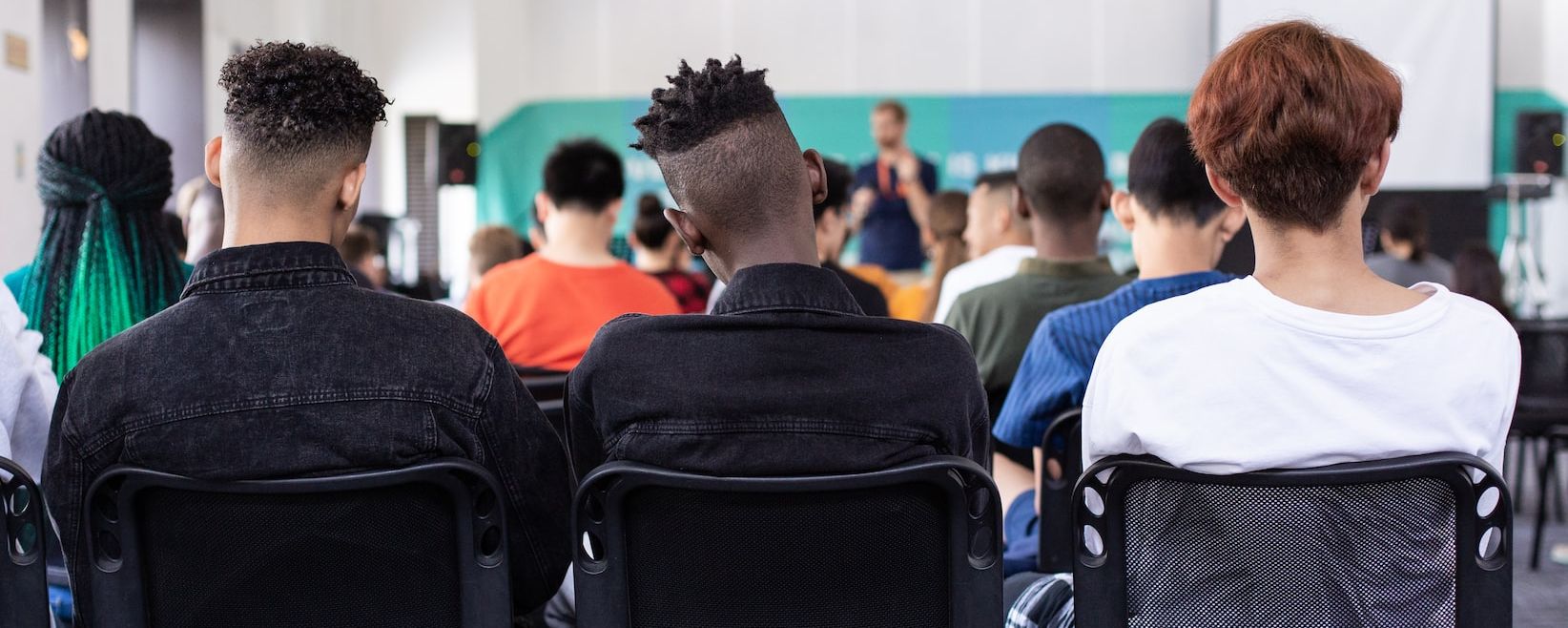The Importance of Cultural Sensitivity in Subtitling for International Students in Universities

Understanding cultural sensitivity in subtitling is an essential aspect for universities that host international students from diverse cultural backgrounds. This concept involves more than just providing direct translations of words or sentences from one language to another. It entails a comprehension and respect for cultural differences, idioms, slang, jokes, and even the subtle nuances that are unique to each language. The aim is not only to ensure that the content is correctly translated but also to make sure it is culturally appropriate, respectful, and non-offensive.
Cultural sensitivity in subtitling is about being aware that certain phrases, expressions, or words might not have an equivalent in another language or could be misinterpreted due to cultural differences. For example, a joke that is funny in one culture might be offensive in another. Moreover, some cultures may have taboos or sensitive topics that are perceived differently in other societies. By being culturally sensitive, subtitlers can navigate these potential pitfalls and provide translations that are accurate, contextually appropriate, and culturally respectful.
Moreover, cultural sensitivity in subtitling also involves understanding and acknowledging the diversity within a single language. It's important to note that languages aren't monolithic. For instance, Spanish spoken in Spain is different from that spoken in Latin American countries, both in terms of vocabulary and cultural references. Consequently, a culturally sensitive subtitler must be aware of these variations to avoid any misunderstandings or miscommunications.
In essence, understanding cultural sensitivity in subtitling is a key factor in building an inclusive and respectful learning environment in universities. It fosters mutual respect and understanding among international students, thereby enriching their academic experience and promoting cultural exchange. Therefore, universities must strive to ensure that their subtitling services are not just linguistically accurate but also culturally sensitive.
The role of subtitles in international education
Subtitles play an integral role in international education, serving as a bridge across language barriers and facilitating a more inclusive learning environment. For international students who may not be fully proficient in the language of instruction, subtitles can significantly enhance the understanding of course content. They allow these students to follow along with lectures, documentaries, or other educational materials at their own pace, thereby reducing the cognitive load of processing information in a non-native language.
Moreover, subtitles also aid in language acquisition. They provide a written context that helps students to understand and learn new words, idioms, and phrases. By seeing the language in written form while simultaneously hearing it, students can improve their listening comprehension and pronunciation, thereby accelerating their overall language-learning process.
Inclusivity in education extends beyond just language proficiency. For students who are deaf or hard of hearing, subtitles are indispensable for their learning. Providing captions for video content ensures that these students are not excluded from any part of the educational experience. Similarly, subtitles can also benefit auditory learners, who process information better when they read it.
However, it's important to note that effective subtitling goes beyond mere translation. It requires cultural sensitivity to ensure accurate and respectful communication. This means considering cultural nuances, slang, colloquialisms, and even humor in the source language to create subtitles that maintain the integrity of the original content. Subtitling, therefore, is not just about language but also about cultural understanding and respect. In the context of international education, this cultural sensitivity in subtitling can foster a more inclusive, respectful, and effective learning environment.

Enhancing communication with culturally sensitive subtitling
Enhancing communication with culturally sensitive subtitling can significantly improve the academic experience of international students in universities. Subtitles play a crucial role in aiding these students to comprehend lectures, videos, and other multimedia instructional materials. However, if these subtitles are not culturally sensitive, it could lead to misunderstandings, misinterpretations, and, ultimately, ineffective communication.
The essence of culturally sensitive subtitling goes beyond just the literal translation of words. It involves understanding the cultural nuances, idiomatic expressions, and even humor present in the source language and then conveying them accurately and appropriately in the target language. This way, international students can not only understand the language but also feel more included and engaged in the learning process.
Cultural sensitivity in subtitling can help to bridge the gap between different cultures represented in the student body. By incorporating cultural references and nuances into subtitles, universities show respect and acknowledgment for diverse cultures, fostering a more inclusive educational environment. This can greatly enhance the communication between faculty and international students, making the latter feel more understood and valued.
Moreover, culturally sensitive subtitles can be instrumental in preventing potential conflicts and misunderstandings that may arise from cultural insensitivity. It can also encourage students to participate more actively in class discussions and group work, as they would feel more confident in their understanding of the course material.
In conclusion, enhancing communication with culturally sensitive subtitling can significantly improve the university experience for international students. It promotes understanding, inclusivity, and effective communication - all of which are essential for a productive and positive learning environment. Hence, universities should invest in culturally sensitive subtitling as an integral part of their international student support services.

The impact of cultural sensitivity on international students
Cultural sensitivity in subtitling has a profound impact on international students, which extends beyond the classroom and into their broader lives. It not only aids in comprehension of academic content but also aids in their overall acclimation to the new cultural environment. Language is more than a mere communication tool; it is a reflection of culture, a repository of metaphors, idioms, and references that are steeped in historical and societal contexts. When subtitling is done with cultural sensitivity, it helps international students navigate through these cultural nuances and gain a deeper understanding of the society they are now a part of.
Firstly, culturally sensitive subtitling ensures that international students do not feel alienated or marginalized. It is a recognition and respect for the diversity that they bring to the campus. This impacts not only their academic performance but also their emotional well-being. Feeling included and understood can boost their self-confidence and make them more open to participating in classroom discussions, group projects, and extra-curricular activities.
Secondly, culturally sensitive subtitling fosters cross-cultural understanding among students. When subtitles accurately translate and explain cultural references, idioms, and metaphors, they serve as mini-cultural lessons. These lessons can spark curiosity and conversations among students, promoting a mutual exchange of ideas and cultural perspectives. This can help to foster a more inclusive and culturally aware campus environment.
Finally, cultural sensitivity in subtitling can prepare international students for their future careers. In today's globalized world, cultural competence is highly valued in many professions. By exposing students to culturally sensitive subtitles, universities can help them develop this critical skill, setting them up for success in their future careers.
In conclusion, cultural sensitivity in subtitling has a profound and multi-faceted impact on international students. It supports their academic success, promotes their emotional well-being, fosters cross-cultural understanding, and prepares them for the globalized workplace. It is, therefore, crucial for universities to prioritize cultural sensitivity in their subtitling practices.

The challenges of subtitling for international students
Subtitling for international students is not without its trials and tribulations. The process often involves more than just a simple direct translation from one language to another. The first hurdle is the linguistic challenge. The differences in grammar, syntax, and vocabulary between languages can make it difficult to accurately convey the same meaning and tone. Additionally, idiomatic expressions, slang, or colloquialisms used in lectures can be bewildering for non-native speakers, and often do not have direct translations in other languages.
In addition to the linguistic issues, cultural elements also pose a significant challenge. Each culture has its unique symbols, customs, and norms that may not exist in others. For example, certain jokes, metaphors, or references to popular culture in the source language may not make sense to international students from different cultural backgrounds. Subtitles, therefore, need to find culturally appropriate equivalents that the target audience can understand and relate to.
Another challenge is the speed at which the speaker talks. During live lectures or discussions, speakers often speak fast, and the subtitles need to keep up with the pace. This can sometimes result in subtitles being abbreviated or simplified, potentially leading to the loss of important details or nuances in the information being conveyed.
Lastly, there is the issue of accessibility. Not all international students are proficient in reading the language of the subtitles. This is particularly true for students who are still in the process of learning the language. In such cases, subtitles, no matter how accurately translated and culturally sensitive, may not be as helpful as they are intended to be.
In light of these challenges, it is clear that subtitling for international students is a complex task that requires not only linguistic competence but also cultural sensitivity and understanding. It demands a balance between accuracy, speed, and cultural appropriateness to ensure that all students, regardless of their linguistic or cultural background, can benefit from the educational content.
Strategies for improving cultural sensitivity in subtitling
The task of improving cultural sensitivity in subtitling is not a one-time effort but a continuous process that requires constant monitoring, feedback, and adjustment. Several strategies can be employed to enhance the cultural appropriateness of subtitles and make them more relatable for international students.
Firstly, universities can invest in professional subtitling services that have expertise in handling diverse languages and cultures. These professionals are often equipped with the necessary knowledge and skills to translate not just words but also the underlying meanings, cultural nuances, and subtleties. Happy Scribe, for instance, has skilled experts who can produce transcripts with an accuracy percentage of about 99%. They understand that direct translation can sometimes lead to misunderstanding or misinterpretation, and therefore, they strive to maintain the tone, context, and cultural elements of the original content.
Secondly, universities can arrange regular training and workshops for their in-house subtitling team. These sessions can equip team members with a deeper understanding of the various cultures represented by the international student community. They can learn about the taboos, the preferred expressions, the various idioms, and other cultural specificities that need to be considered when creating subtitles. This knowledge can significantly improve the quality and cultural relevance of the subtitles produced.
Another strategy is to involve international students themselves in the subtitling process. They can provide valuable insights and feedback to make the subtitles more culturally sensitive and relevant. Universities can create a feedback mechanism where students can report problematic subtitles and suggest improvements. Such a system not only improves the quality of subtitles but also fosters a sense of belonging and engagement among international students.
Lastly, universities can leverage technology to improve cultural sensitivity in subtitling. Various AI-based tools and software can help in creating more accurate and culturally appropriate subtitles. In this case, Happy Scribe transcription software extracts speech from any file and converts it to text using an artificial intelligence (AI) model. The Automatic Transcription Software from Happy Scribe is powered by AI, which can transcribe text with 85% accuracy in over 120 languages, dialects, and accents. These tools can recognize and adapt to different speech patterns, accents, and dialects, providing more personalized and inclusive subtitling.
In conclusion, improving cultural sensitivity in subtitling is a multifaceted process that demands time, effort, and resources. However, the benefits it brings in terms of promoting inclusivity, understanding, and respect among a diverse student body make it a worthy investment.

Niek Leermakers
Niek is a former tech journalist who swapped his pen for a Google Analytics in 2015 account and has been working in content marketing ever since. He really loves writing for Happy Scribe about media localisation and AI!